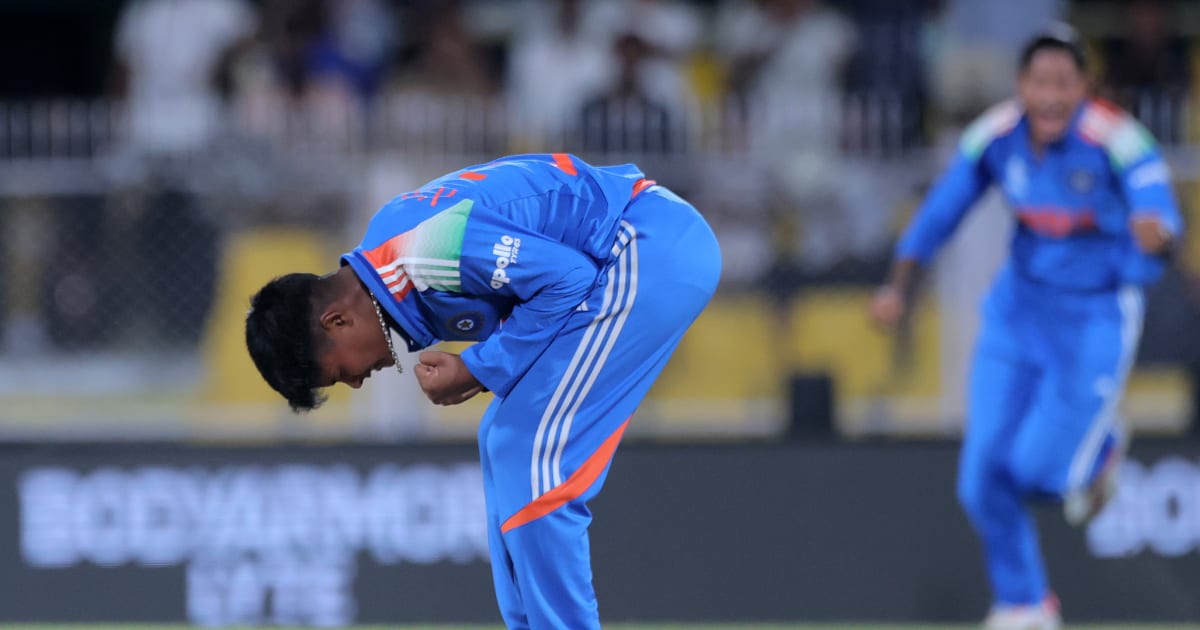Why Pakistani players lack confidence as compared to Indian counterparts

Team India won the T20I Asia Cup 2025 beat Pakistan by five wickets last week. The final was the third Pakistan vs India match of the tournament and in all three games India remained winner.Ninth Asia Cup titles for India, was the most for any team. The 2025 edition is India’s second Asia Cup title in the T20 format, following their previous win in 2016. They have seven titles in the ODI format - in 1984, 1988, 1990, 1995, 2010, 2018 and 2023. Sri Lanka have won six titles (five ODIs and one T20) at the Asia Cup, while Pakistan have won two (both ODIs).Team India won all nine matches against Pakistan while they chased the target in T20Is.These are the most matches for a team with a 100% chasing record against an opponent.India’s 172-run chase in the Super four first game in Dubai was the highest of their eight successful run-chases against Pakistan.In the same game, Abhishek Sharma’s 24 ball fifty was the quickest for an Indian batsman against the green shirts. Previous fastest fifty record was hold by Yuvraj Singh’s 29-ball fifty in 2012 in Ahmedabad.Abhishek and Shubman Gill’s 105 runs was the highest opening stand for India against Pakistan in men’s T20Is. Only once before have India had a century stand for any wicket against Pakistan - 113 between Virat Kohli and Hardik Pandya at the MCG in 2022.In analysing Pakistan’s performance in the Asia Cup, a glance at the scorecards suggests a largely successful campaign, with the team winning all matches except against India.However, a closer inspection reveals underlying issues that hindered consistent success.The Green Shirts struggled to secure convincing victories, highlighting ongoing problems with their middle-order stability.Throughout the tournament, Pakistan’s batting lineup was plagued by inconsistency. Key contributors such as Salman Agha, Mohammad Haris, Hasan Nawaz, Hussain Talat and Khushdil Shah failed to deliver impactful performances. Head coach Mike Hesson’s emphasis on strike-rate proved ineffective, as players appeared to prioritize hitting boundaries from the outset rather than rotating the strike, leading to wickets falling under pressure.Captain Salman Ali Agha’s suitability for T20 cricket was widely questioned, with many experts believing his strengths lie in ODIs and Test matches. His performance in the Asia Cup confirmed these doubts; over seven matches, he scored only 37 runs, with a high score of 20, and a batting average of 5.29. His strike rate of 97.36 was underwhelming, further questioning his role as a consistent performer.As captain, Salman faced criticism for his batting order decisions and bowling tactics. Despite being included as an all-rounder, he rarely bowled during the tournament.Notably, in the final’s death overs, he handed the ball to Haris Rauf, who was hit for 17 runs by Tilak Varma, allowing India to accelerate their chase.Mohammad Nawaz, the tournament’s most successful bowler, was underutilized, bowling only once in seven matches and conceding just six runs. Saim Ayub also failed to complete his quota of four overs, indicating a lack of strategic use of bowlers. Haris Rauf, who took nine wickets at an average of 18.33, faced intense criticism for his expensive spell in the final against India, where he conceded 50 runs in just 3.4 overs during a crucial phase of the chase.Saim Ayub’s selection as an opener drew significant debate; however, his performance was disappointing. Over seven matches, he scored a mere 37 runs, with four ducks and a highest score of 20. His struggles against quality bowlers, espec ally with the cut shot, were evident, and he failed to adapt in both opening and lower-order positions. Despite his batting woes, his bowling-eight wickets at an average of 16 and an economy rate of 6.4-kept him in the squad.Pakistan’s batting was limited to only four fifties-two by Sahibzada Farhan, one each by Fakhar Zaman and Mohammad Haris. Sahibzada Farhan was the team’s standout, accumulating 217 runs at an average of 31, ranking third highest in the tournament. However, his strike rate of 116 lagged behind openers from other nations, such as India’s Abhishek Sharma and Sri Lanka’s P Nissanka.Since the retirement of legends like Inzamam-ul-Haq, Mohammad Yousuf, and Younis Khan, Pakistan has struggled to find middle-order stability. The team’s inability to shoulder responsibility during the crucial middle and death overs remains a significant concern. As Pakistan looks ahead, addressing these batting and strategic deficiencies will be essential to regaining consistency at the international level.Pakistan’s bowling unit deserves commendation for their exceptional performance throughout the Asia Cup. They consistently rose to the occasion, often winning matches with their disciplined bowling efforts. Notably, they defended a low total of 136 against Bangladesh in what was effectively a semi-final, and nearly halted India’s formidable batting lineup with a 146-run target.Shaheen Shah Afridi spearheaded the bowling attack, claiming 10 wickets at an impressive average of 16.4 and an economy rate of 6.6. His performance made him the second- highest wicket-taker in the tournament, just behind Indian spinner Kuldeep Yadav, who took 17 wickets.Meanwhile, Pakistan’s leading spinner, Abrar Ahmed, who was expected to lead the spin department, did not fully meet expectations. Despite maintaining an economical rate of 5.36, he managed only six wickets across seven matches, highlighting a lack of immediate impact.Traditionally, Pakistan’s bowling is considered stronger than its batting, and this tournament reaffirmed that notion-aside from Afridi, few fast bowlers consistently delivered as genuine wicket-takers. In the spin department, reliance on Abrar Ahmed remains significant, yet contributions from other spinners have been sporadic at best.Furthermore, despite playing predominantly on spin-friendly pitches domestically, Pakistani batsmen continue to struggle against quality international spinners. Their difficulty in countering bowlers like Kuldeep Yadav and Varun Chakravarthy on turning tracks underscores concerns over their preparation and adaptability in foreign conditions.Addressing these weaknesses will be vital for Pakistan’s future success in international cricket.The issue demands urgent attention from the management. Since the retirement of Saeed Ajmal, Pakistan has failed to produce a world-class spinner. With Abrar Ahmed carrying the burden across formats, other options such as Sajid Khan and Noman Ali have not been able to secure permanent places in the national squad.One major reason is the difference in domestic structures. Pakistan’s domestic system, though improved after restructuring, still lacks the financial strength, professionalism and global exposure. Young Pakistani batsmen rarely face international-quality bowling until they are thrust into national duty, leaving them underprepared.Even those players play exceptionally well in the Pakistan Super League (PSL), when came in the national team, performed very ordinary. The failure to breach the 200-run mark in a T20I innings since the 2022 T20 World Cup raises serious concerns about the team’s batting capabilities.On the other hand, India’s Ranji Trophy and Indian Premier League (IPL) expose young batsmen to high-pressure situations against world-class bowlers early in their careers. The IPL, in particular, has shaped fearless batsmen such as Virat Kohli, Shubman Gill, Abhishek Sharma, Suryakumar Yadav, Tilak Varma and Varun Chakravarthy.Another factor is technical grooming, other top teams’ batsmen are taught to play with a straight bat, rotate strike, and build innings before switching gears. Pakistani batsmen in contrast, try to hit hard every ball, often rely on natural flair rather than structured technique.The lack of long-term batting coaches and the frequent chopping and changing of the playing XI disrupt confidence.Pakistani players should take start aggressively, stable middle-order partnerships and powerful finishes while Pakistan's current players hand strategy starts with cautious beginnings, gradual acceleration, and look for better conclusions in which they usually fail to achieve their desired target.Green shirts should be capable of 360 stroke play and are way ahead in terms of game awareness. The lack of power hitters in the national team is a glaring weakness in the modern game.To address this issue, Pakistan needs to embrace the changing dynamics of cricket, invest in coaching infrastructure for power hitting, and provide young cricketers the confidence and opportunities to develop their power-hitting skills. Only then can Pakistan hope to compete on equal footing with other cricketing nations.Fakhar Zaman, Mohammad Haris, Hasan Nawaz, Hussain Talat, are our power hitters butthey are not consistent. Mostly they score quickly 15-20 runs but fail to convert these scores into big innings.








